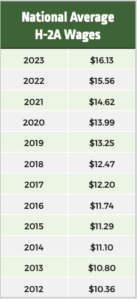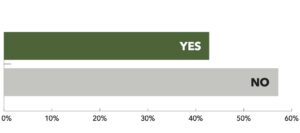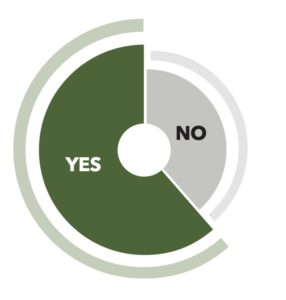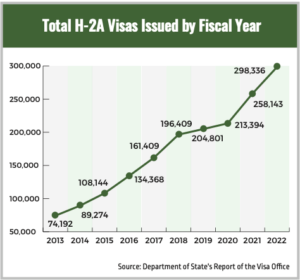
2023 Spudman Survey results are in
When it comes to farm labor needs, potato growers are in a fortunate position. While growers of other vegetables and fruit see the most labor-intensive work at harvest, potatoes are one of the most mechanized commodities, even for fresh market product.

But as migrant workers have become less available in recent years, the ability of potato grower-shippers to fill positions on the packing lines, in warehouses and in other areas has shifted. As with other commodities, the growing number of H 2A temporary visa workers in the potato industry serves as a leading indicator of how labor needs are rising.
“The potato industry uses a substantial and growing amount of H-2A workers, as well as a regular workforce,” said Kam Quarles, CEO of the National Potato Council. “I think we’re certainly seeing impacts. I don’t know if I would go so far as to say that, specifically because of the inaccessibility of labor, that you’ve got substantial amounts of potato production going unharvested. But there’s no doubt it’s having an impact on our industry, and it’s causing a great deal of stress.”
In 2019 the Spudman Ag Labor Survey noted 22% of respondents used H-2A workers; that number grew to 36% in the 2023 survey. This year, participants who said they did or didn’t have enough labor was evenly split at 50-50; four years ago, almost 60% said they did not. The drop is an indication respondents are using the H-2A program to secure workers.
Survey respondents noted challenges including: the rising hourly wage mandate; lack of flexible arrival/return dates to the workers’ home countries; paperwork; and housing and transportation requirement.
LABOR PLANS
Survey respondents have a variety of plans for labor this year, including:
- Hire interns.
- Continue using H-2A, and expand
if necessary. - Increase mechanization.
- Increasing wages.
- Find undocumented workers.
- Cut acreage.
- Use farm labor contractors.
H-2A doesn’t respond to the immediate needs of the marketplace, Quarles said. “It asks growers to irrationally forecast their labor needs months in advance, when you simply don’t know what Mother Nature is going to throw at you,” he said. “And then it also operates with a mandatory elevated minimum wage that the federal government sets every single year in a different place. Often that wage can explode right in the middle of a producer’s season and makes it incredibly hard to budget.”
That rate, known as the Adverse Effect Wage Rate, rose again on Jan. 1, and is at a national average of $16.13. Five years ago, it was $12.47.
Did you have enough labor?

If you were short, did you have to leave crops in the field/orchard?

AEWRs
Current AEWRs for the top potato- producing states are:
- Idaho — $15.68
- Washington — $17.97
- Wisconsin — $17.34
- Oregon — $17.97
- North Dakota — $17.33
SOLUTIONS TO THE PROBLEM
Quarles said the NPC is one of the founding members of the Ag Workforce Coalition, which supported the Farm Workforce Modernization Act, approved by the U.S. House of Representatives in 2019 and 2021.
The Senate has yet to approve similar legislation and may not be addressed by the current Congress.
“You have the existing migrant workforce,” Quarles said. “They are not legally present here in the U.S. However, they’re supplying the labor for upwards of 70% of all of the labor- dependent agricultural activities in the U.S.”
Simply deporting those workers would “immediately shut those farms down,” Quarles said.
 Quarles said the solution must involve finding a way to provide those farm workers with legal status in the U.S., although that doesn’t necessarily mean granting citizenship.
Quarles said the solution must involve finding a way to provide those farm workers with legal status in the U.S., although that doesn’t necessarily mean granting citizenship.
Congress has a choice, he said: either reform the H-2A visa program or create an entirely new guest worker program that responds to the needs of the marketplace.
“The government has forced U.S. agriculture into this incredibly insecure situation where growers don’t know if they’re going to have a raid on their farms, and certainly the employees don’t know if they’re going to be rounded up by the authorities from one day to the next,” Quarles said. “That’s no way to run a business.”
At the same time, border security, and enforcing immigration laws throughout the U.S., is essential, he said.
“If you create a new visa for the migrant workers and a new guest worker program and then you don’t have strong rules around it and you don’t have strong enforcement, people are just going to cheat,” Quarles said. “They’re going to run around the system and the whole thing’s going to break down again.”







